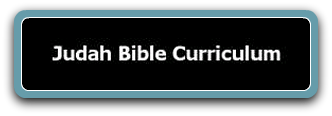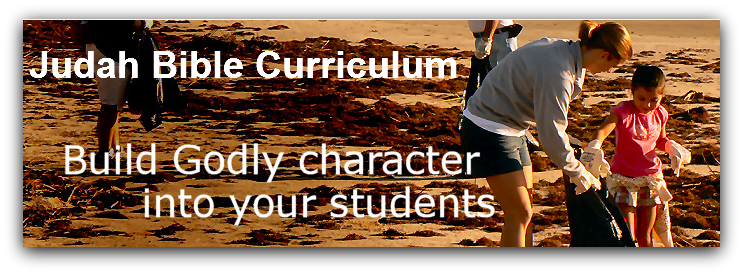 |
A few years ago, I was reading something homeschool related, and came across the idea of the the Principle Approach to homeschooling. As I first read about it, the Principle Approach is homeschooling while placing emphasis on a Biblical Worldview and incorporating the Bible into all subjects. I *love* that idea!! And, while we're much too eclectic to pick one approach and follow it to the letter, I *do* try to keep our focus on God, and help my children (and myself) to remember that God is in EVERYTHING, not just when we have "Bible study" on our schedule. So, I have been wanting, ever since, to look into the Principle Approach and see about incorporating some of it's ideas into our schooling/life.
Needless to say, when I had the chance to review the Judah Bible Curriculum, as soon as I saw that it is "A Principle Approach curriculum for Bible class", I was excited! To make it even better, since the big girls had recently switched from attending their own class at church, to being helpers in Little Bit's class (where I lead), I had been keeping my eyes open for something to use with them during our evening Bible lesson time.
The Judah Bible Curriculum is designed to be used for Bible for all ages (K-12). It can be purchased in a hard copy ($74, including shipping) or download ($44). We received the download version for this review. Regardless of which version you choose, you receive:
- the K-12 manual
- an elementary notebooking idea boo
- and an 8 lecture "Teacher Training Seminar" audio
The program is designed to be used for Kindergarten through 12th grade, going through the Bible once per year for 6 years, then repeating back through it all, going more in depth for older children. The "textbook" of this curriculum is the Bible, supplemented by various Bible study aids such as Bible dictionaries, atlases, commentary, etc.
One nice thing about this, for use in a homeschool environment, is that none of this is "age specific". So, while, in a classroom environment, specific topics are listed for specific grade-levels, in a homeschool environment, the whole family can work through the 6 year cycle together, then start over. The "class" (or family, as the case might be), spends one week on each topic. Reading the Bible passage, and then digging deeper by focusing on key events, individuals, etc. and learning to use Bible study aids.
As I began reading through the manual, I was excited to be reminded of the importance of teaching children to study the Bible for themselves, and to encourage them to study deeply and draw their own conclusions. I was excited to get tips on how to implement this, something that I'm still learning for myself, with young children. However, as I got past the introductory section that was telling me what this curriculum was going to teach, I found that this is a pretty high-level manual. It never drills down to a step by step of HOW to teach this, especially for young children. There are examples of what/how to do, but after the initial examples, for each week the curriculum just lists the theme, and Bible passage to focus on. The recommendation is for the teacher to spend time ahead of class studying the passage on his/her own, and then guide the children through the passage. This makes this, by far, the most teacher-preparation-time intensive curriculum I've used.
One thing that I hadn't realized, is that there's a major focus, in the principal approach, on government, and how a Biblical worldview will affect government. You can read about it here.
This program has alot of potential!!! I feel soo strongly in the value of teaching children to dig deeply into God's word, and to incorporate God's will into all aspects of our life and homeschool, so I love that emphasis in this curriculum, and the principal approach in general. However, I'm struggling with this. I think many homeschool moms (and dads, but for ease of writing, since in most cases mom is the primary teacher, I'm going to go with moms)want everything spelled out step-by-step, first teach this, then teach that . . . This curriculum does NOT do that. On the other hand, there are homeschool moms who like to do their own thing (as you probably know, if you've read my blog much, I fall into that category). The problem with this curriculum for that group is that . . . we can probably figure out this type of thing without a curriculum. In fact, other than the specific Bible passages recommended, this approach is pretty similar to what I've been doing with the girls for morning Bible time for the past year. . . so really, this curriculum seems to be targeted at a niche market of those who strongly want to teach their children about the above mentioned worldview/government philosophy. In that case, this curriculum does a great job of breaking the Bible down into topics that focus on this philosophy and the audios, and related book excerpts, available on the website once you've purchased the curriculum, give tons of information pertaining to this idea.
My recommendation, if the principal approach intrigues you, would be to read carefully through the philosophy of education. If you like what you see, and are excited to dig deeply into these topics on your own, and then teach them to your children, this might be a great fit for you!
What would I change? I think this would appeal to a wider audience if it gave more step-by-step instructions for implementing the program. I also think it would be very helpful if printables for the lower grades were included. The manual recommends using coloring pages for the youngest children. And the curriculum includes a 60 page book of "notebooking ideas", but these are all samples of notebooking pages prepared by students, while many of the ideas can be prepared on plain notebook paper, there are quite a few that are on specific forms. Maps, coloring pages, or other forms. If you want to use these ideas you are going to have to hunt down the printables, or create them, on your own, they aren't included. For the price of this curriculum, I would expect to get the printables as well. The curriculum does include printables for summarizing key points but this is geared toward older children, not lower elementary.
Because we were already doing something similar for Bible time, and because I chose not to put extreme focus on the government aspect of things, my children didn't really notice a difference when we switched to this curriculum. It did mean we jumped back to Genesis, instead of the NT where we'd been reading, but beyond that, they didn't see a much change. To avoid burdening them with too much writing, and because we were already doing Bible notebooking for our morning Bible time, I chose not to incorporate the notebooking aspect of this curriculum, but since the curriculum doesn't provide printables, the notebooking would be essentially the same as their morning Bible notebooking, just focused on different topics.
Be sure to check out my crew-mates' reviews to see how other families used this product!
Disclaimer: I received the above mentioned product in exchange for writing an honest review. No other compensation was received and all opinions are those of myself or my children, as stated.


No comments:
Post a Comment